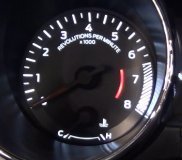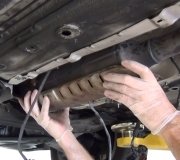Honestly, if the throttle control motor or position sensor was bad, you would have a check engine light on. Keep in mind, there is no load on the engine at first. When you place it under a load, it requires more fuel. If the pump cannot provide it, that would be an issue. We need to start somewhere since there are no codes showing.
_____________________________________
Here are the directions for checking fuel pump pressure specific to your vehicle. At the end it indicates that you should have 51psi at idle.
FUEL PRESSURE
Inspection
FUEL PRESSURE RELEASE
With CONSULT-III
1. Turn ignition switch ON.
2. Perform "FUEL PRESSURE RELEASE" in "WORK SUPPORT" mode with CONSULT-III.
3. Start engine.
4. After engine stalls, crank it two or three times to release all fuel pressure.
5. Turn ignition switch OFF.
With CONSULT-III
1. Remove fuel pump fuse located in IPDM E/R.
2. Start engine.
3. After engine stalls, crank it two or three times to release all fuel pressure.
4. Turn ignition switch OFF.
5. Reinstall fuel pump fuse after servicing fuel system.
FUEL PRESSURE CHECK
CAUTION:
Before disconnecting fuel line, release fuel pressure from fuel line to eliminate danger.
NOTE:
- Prepare pans or saucers under the disconnected fuel line because the fuel may spill out. The fuel pressure cannot be completely released because L32 models do not have fuel return system.
- Use fuel pressure gauge kit [SST: (J-44321)] to check fuel pressure.
1. Release fuel pressure to zero.
2. Connect fuel tube (B) adapter to quick connector.
A : Fuel pressure gauge
C : Fuel feed hose
3. Turn ignition switch ON and check for fuel leakage.
4. Start engine and check for fuel leakage.
5. Read the indication of fuel pressure gauge.
At idling : Approximately 350 kPa (3.57 kg/cm2, 51 psi)
6. If result is unsatisfactory, check fuel hoses and fuel tubes for clogging.
If OK, Replace "fuel filter and fuel pump assembly".
If NG, Repair or replace.
___________________________________________
Here is a link that shows in general how this is done:
https://www.2carpros.com/articles/how-to-check-fuel-system-pressure-and-regulator
Let me know what you find or if you have other questions.
Take care,
Joe
Image (Click to make bigger)
Tuesday, August 21st, 2018 AT 5:55 PM



